| Image Soon
|
Leeks (Allium
ampeloprasum) |
| Image Soon
|
Lemon Balm
(Melissa officinalis) Lemon Balm has been recorded
through history as a medicinal and fragrant herb. Also
recorded to be one of the favorites through the
developement of the United States. Thomas Jefferson grew
it in his personal garden.
- Culinary:
Whole fresh leaves may be added to a
garden or fruit salad for the taste of lemon, and
a hint of mint. Dried leaves are used for tea.
Goes great with most vegetables, and adds flavor
to meat and poultry dishes.
- Medicinal:
The scent of this herb alone, may bring
out the cheerfulness of anyone. The oil attacks
bacteria and viruses and helps expel them from
the body. Also used to treat wounds and bruises.
Also used in the past as a form of valium.
- Aromatic:
The leaves smell of lemons with a hint
of mint. May be added to potpourri.
- Full
Sun to partial shade.
- 18-20
inches in height.
- Leaves
strongest flavor is in May. Just before the
flower blooms.
- Perennial.
- Well-Drained
soil.
|
| Image Soon |
Lemon Balm,
Variegated (Melissa oficinallis 'Variegata') This variety of Lemon Balm lies
right between the two previously mentioned. One was
green, and the other was gold. This eye catching variety
is a little of both. Splashes of gold riddle the plant
for an eye pleasing treat.
- Culinary:
With an obvious taste and smell of lemon, it
hides a scent of mint within. It may be added
with mints to create a great tasting tea. The
leaves are best if used fresh in cooking. You can
throw them in to fresh salads, stuffing, and
marinades for the strong lemon flavor.
- Medicinal: Fresh
leaves can cover insect bites and stings for a
mild relief. Tea will give relief to colds,
headaches, and tension.
- Aromatic: Foliage
is used in potpourris, and in herb pillows. A
brush up against a leaf, or a simple rub between
your fingers will send the aromatic lemon scent
into the air.
- Ornamental:
Variegated highlights to a garden is always
pleasing. Especially with the scent it emits.
- Full Sun to part
shade.
- 12-18 inches in
height.
- If foliage begins to
blotch, move into deeper shade.
- Perennial
- Moist Soil
|
| Image Soon |
Lemon Grass
(Cymbopogon citratus) |
 |
Lovage (Levisticum
officinale) All parts of the plant are useful in the
kitchen, making it a worthwhile plant to keep. This herb
was once used by witches in their love potions.Lovage
looks and smells a lot like overgrown celery. It has
bright green, hand shaped leaves and thickly ridged
hollow stems. The flowers, which bloom in mid- to late
summer, are small, yellow, and formed in umbrella-like
clusters. The seeds are flat, oval, and deeply ridged.
- Culinary:
Seeds are added to liquors, breads, and pastries.
Also sprinkled on your favorite foods for a
celery taste. Leaves can be freshly tossed into
salads, and also used in soups, stews, and
sauces. Lovage goes great with a majority of
foods, including fresh stalks, like celery
sticks.
- Medicinal:
Europeans use it today as a mild cure to minor
stomach and headaches. Lovage leaves and roots
are said to be a good cure to some skin and eye
problems. Fresh juice from the plant is also a
once used cure for pink eye. A tea from the root
was used as a diuretic.
- Full
Sun to part shade.
- 5-7
feet in height.
- Wait
two years before harvesting the roots or stems.
- Perennial.
- Moist,
fertile, and well-drained soil.
|
|
|
Love-In-A-Mist (Nigella
damascena) |
| Image Soon |
Marigold, Lemon
Gem (Tagetes signata) |
| Image Soon |
Marigold,
Tangerine Gem (Tagetes tennifolia) |
| Image Soon |
Marjoram, Hardy
(Origanum x majorana) Marjoram is a highly perfumed herb
with thick trusses of dainty white or purple flowers
which make it a highly decorative herb that is suitable
for the flower garden. In warmer climates it is a
perennial, but it is treated as a half-hardy annual in
colder areas since it will not survive a severe winter.
- Culinary:
Leaves and flowers are used fresh or dried in an
increasing amount of recipes. Goes great with
meats, and fish, and a large variety of
vegetables. Marinades, stews, and sauces call for
this herb. A very important seasoning for sausage
in Germany.
- Medicinal:
In the past, it has been used for
asthma, toothaches, and even cancer. Nowadays, it
is only used for a mild relief of sinus
congestion.
- Aromatic:
Used in potpourris and herb pillows.
- Full
sun
- 12
inches in height.
- Pinch
the plant back just before they bloom to maintain
their shape.
- Perennial
- Light,
dry, and well-drained soil.
|
| Image Soon |
Marjoram, Sweet
(Origanum majorana) Originating in the Mediterranian,
this herb is frequently used in the dishes from the area.
This is the most popular marjoram for cooking, and it is
closely associated with turkey stuffing.
- Culinary:
Foliage is widely used in sauces, salads, and
cheeses. Popular in France, and Italy with the
use of many meats, fish, and vegetables.
- Medicinal:An
aromatic tea aids in digestion, flatulance,
colds, and headaches. Also stimulates
circulation.
- Aromatic:
The foliage gives off a sweet and
pungent smell. Foliage is used in potpourri.
- Full
Sun
- 12
inches in height.
- Protect
from the cold.
- Perennial.
- Dry,
Well-Drained soil.
|
|
|
Mint, Apple
(Mentha suaveolens) A
fast growing mint , with rounded toothed leaves. A fruity
addition to the garden, and an excellent indoor grower.
- Culinary:
Fruit salads, cheeses, jellies, sauces, teas.
- Medicinal:
Chew on leaves for bad breath.
- Aromatic: A
slight apple scent to the foliage.
- Ornamental:
Great addition for those places where an aromatic
groundcover is needed. Also used as a garnish.
- Sun to part-shade
- 20-24 inches in
height.
- Young new foliage has
the best flavor when it comes to mints.
- Perennial
- Moist, Well-Drained
soil.
|
|
|
Mint, Chocolate
(Mentha x piperata 'Chocolate') Fast-growing, with dark foliage. Unique
scent reminiscent of chocolate.
|
|
|
Mint, Corsican
(Mentha requienii) Tiny
green peppermint scented leaves with small flowers make
this an interesting ground cover for the herb garden.
Corsican mint is not a tall grower.
- Culinary: A
strong peppermint flavor to the foliage. The
flavor of Creme de Menthe originated from this
Mint. Not very popular for culinary uses.
- Ornamental: Tight
growth habit with lavender colored flowers make
this Mint an attractive groundcover. Grows well
in shady, moist conditions.
- Aromatic:
Strong scent of Peppermint. Especially when
crushed.
- Part-Shade to Sun.
- Creeper
- Protect from cold.
Not very hardy.
- Tender Perennial
- Moist, Well-Drained
soil.
|
| Image Soon |
Mint, Curly
(Mentha spicata 'Crispii') Attractive, light green, round curly leaves.
A curly form of the Spearmint, however not as strong in
flavor or scent.
- Culinary:
Same properties as spearmint. Used in jellies,
jams, sauces, marinades, stuffings, and added to
salads. Many uses in the kitchen. Also popular in
vinegars.
- Medicinal:
Most mints are stimulants and aid in digestion,
and help to reduce flatulance.
- Aromatic:
Mild scent of Spearmint.
- Ornamental: Round,
curled foliage adds more interest than most of
the other mints.
- Sun to Part-Shade.
- 12-16 inches in
height.
- Frequent cutting or
mowing keeps mint under control, and helps fill
in the plant with lush foliage.
- Perennial
- Moist, Well-Drained
soil.
|
|
|
Mint, Emerald
& Gold (Mentha x gentilis 'Variegata') Emerald green foliage with splashes
of gold variegation add ornamental attraction to this
mint. Also known as Ginger Mint.
- Culinary:
A nice minty flavor with a hint of a ginger
spice. Adds an excellent zip to many dishes.
- Aromatic:
The spicy scent of ginger is emitted from the
foliage.
- Ornamental:
Golden variegated foliage makes it a very
attractive mint in the garden.
- Sun to Part-Shade.
- 12-16 inches in
height
- Prune to renew the
growth of the golden variegation
- Perennial
- Moist, Well-Drained
soil.
|
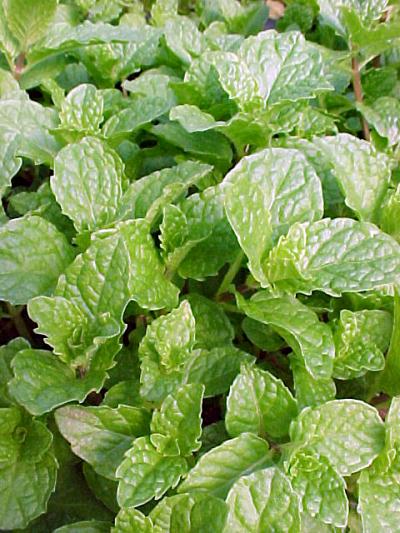 |
Mint, Kentucky
Colonel (Mentha spicata 'Kentucky Colonel')
This vigorous plant is the
best mint for making Mint Juleps. One of the most
aromatic mints with larger leaves good for cutting.
|
| Image Soon |
Mint, Lime |
| Image Soon |
Mint, Mountain
(Pycnanthemum verticillatum) Quickly spreading with a minty-flovored.
|
| Image Soon |
Mint, Nigra (Mentha
Nigra) The strongest
smelling mint of them all.
|
|
|
Mint, Orange
(Mentha x piperita 'Citrata') Fast growing with dark foliage and a strong
fruit-like flavor unlike other mints. Well known for it's
scent.
- Culinary:
Great for tea, jams, jellies, vinegars,
stuffings, and a wide varirety of fish, meats,
and poultry.
- Medicinal:
Most mints are stimulants and aid in digestion,
and help to reduce flatulance.
- Aromatic:
A strong fruity scent is given by the foliage of
this mint. Used to scent soaps and perfumes.
- Ornamental:
Purple tinged foliage with purple stems adds
interest to this herb.
- Sun to Part-Shade
- 12-18 inches in
height.
- Pick leaves just
before flowering.
- Perennial
- Moist, Well-Drained
soil.
|
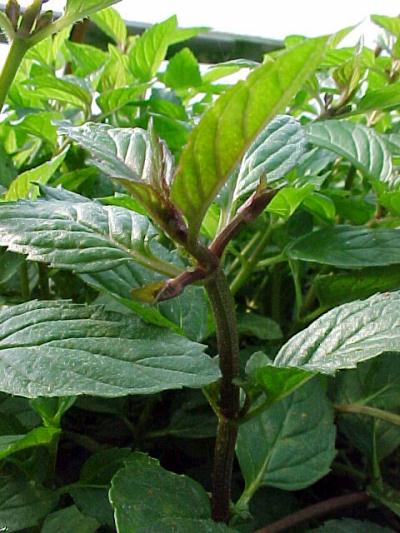 |
Mint, Peppermint
(Mentha x piperita) Bieng
one of the most popular of all mints, you can probably
find it just about anywhere. Dating back to greek
mythology, it has made it's way through time as an
increasingly popular herb.
- Culinary:
The prime choice nmint in flavoring candy, gum,
tea and many other sweets. Used for jelly, jam,
vinegars, and in chocolate desserts..
- Medicinal:
Tea helps digestion, colds, hiccups, and
flatulance. Oil is great for migraines and
muscular aches. Peppermint is the source for
Menthol. Menthol helps with digestion, muscle
spasms, and upset stomachs. The scent helps clear
the mind and your air passages. Also helps with
bad breath.
- Aromatic:
The distinctive scent of Peppermint fills the
air, especially when walked through, or stepped
on. Used in potpourris. Makes an aromatic and
refreshing bath. Helps bad breath.
- Full Sun to Part
Shade.
- 24 inches in height
- Deters rodents.
- Perennial.
- Moist, Well-Drained
soil.
|
|
|
Mint, Pineapple
(Mentha suaveolens 'Variegata') A mild apple mint flavor with a remarkeable
variegation and a delicious scent to the foliage. AN
excellent ornamental mint.
- Culinary:
Seeing it is a variety of Apple MInt, it has the
same uses. Fruit salads, cheeses, jellies,
sauces, teas, jams, and vinegars are just a few
products that mint is a popular ingredient to.
- Medicinal:
Chew on leaves for bad breath.
- Aromatic:
A delicious pineapple scent is hard to resist.
Frequently added to potpourris and mint bags.
- Ornamental:
A creamy variegation around the edge of bright
green leaves make it quit striking. A bit shorter
and easier to contain than it's close relative
Apple Mint.
- Full Sun to
Part-Shade.
- 12-16 inches in
height.
- Pineapple Mint last
longer into the winter than most other mints.
- Perennial.
- Moist, Well-Drained
soil.
|
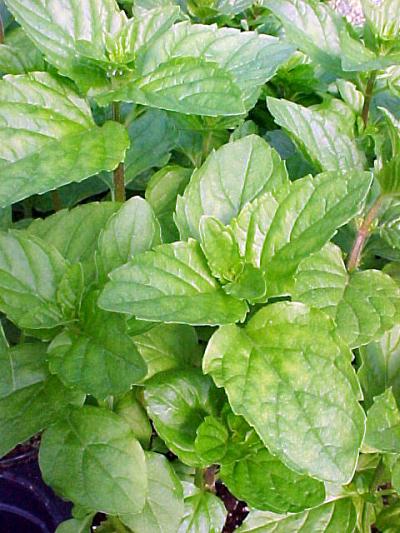 |
Mint, Spearmint
(Mentha spicata) The
second most popular Mint, just behind the all popular
Peppermint. Dating back to greek mythology as well,
Spearmint and Peppermint almost go hand in hand.
- Culinary:
Jelly, sauces, teas, vinegar. A bit milder than
Peppermint, enhansing the taste of many meats,
fish, and poultry. A huge favorite in vegetable
dishes. Also a flavor for gum and other candies.
- Medicinal:
Inhale rags with Spearmint oil on it to help aid
in Cold Digestion. Use oil for migraines, and
muscular aches.
- Aromatic:
The smell of mint is always something to please
the senses. Fills the garden with the wonderful
smell.
- Ornamental:
Rated as the number one garden mint. Keep pruned
to encourage lush growth.
- Full Sun to part
shade.
- 24 inches in height.
- Youger leaves and
stems have the most flavor.
- Perennial.
- Moist, Well-Drained
soil.
|
| Image Soon |
Myrtle, Green (Myrtus
cummunis) Related
closely trough time to Venus, the greek legend. There are
many stories behind the relationship of the legend and
the mystical plant, but fact is, that the plants beauty
still lives on today.
- Culinary:
Young branches are cooked with meats to add
flavor. Berries are ground up and used as a
spice. Flowers may be added to fresh salads for a
bit of ornamental property.
- Medicinal:
A tea is made for sinus relief. Foliage may be
compressed to be applied to cuts and bruises.
- Aromatic: Foliage
and flowers are added to potpourri.
- Ornamental:
Myrtle is commonly used in the art of topiary.
You may find it in many shapes and forms. White
flowers from late-summer to fall.
- Full Sun
- 8-10 feet in height.
- Protect from wind.
Leaves have greatest scent when plant is in
flower. Keep from cold
- Perennial, evergreen.
- Well-Drained soil.
|
| Image Soon |
Nasturtium,
Alaska (Tropaeolum majus 'Alaska') Originating in Peru, and then
brought to Spain, this decorative herb slowly began to
spread in popularity. Saucer shaped leaves, and colorful
trumpet-like flower were just the beginning of the
neccesity for this herb.
- Culinary:
Flowers and leaves have a peppery taste. Flower
buds are a great substitute for Capers, and are
delicious if pickled in vinegar. Foliage and
flowers may be tossed into a fresh salad.
- Ornamental:
Flower from early summer to frost. Foiliage has a
splash of variegation to it, making it a pleasing
addition to your garden.
- Full Sun
- 12 inches in height.
- Nasturtiums grown in
a shady, moist area will grow much foliage, but
will not flower as nice.
- Annual
- Moist, Well-drained
soil.
|
| Image Soon |
Nasturtium, Jewel
Mix (Tropaeolum majus 'Jewel MIx') Originating in Peru, and then
brought to Spain, this decorative herb slowly began to
spread in popularity. Saucer shaped leaves, and colorful
trumpet-like flower were just the beginning of the
neccesity for this herb.
- Culinary:
Flowers and leaves have a peppery taste. Flower
buds are a great substitute for Capers, and are
delicious if pickled in vinegar. Foliage and
flowers may be tossed into a fresh salad.
- Ornamental:
Flower from early summer to frost. Nice green
round foliage with white veins. Reminds one of a
lily pad leaf. Beautiful flowers.
- Full Sun
- 12 inches in height.
- Nasturtiums grown in
a shady, moist area will grow much foliage, but
will not flower as nice.
- Annual
- Moist, Well-drained
soil.
|
| Image Soon |
Nasturtium, Red
Wonder (Tropaeolum majus 'Red Wonder') Originating in Peru, and then
brought to Spain, this decorative herb slowly began to
spread in popularity. Saucer shaped leaves, and colorful
trumpet-like flower were just the beginning of the
neccesity for this herb.
- Culinary:
Flowers and leaves have a peppery taste. Flower
buds are a great substitute for Capers, and are
delicious if pickled in vinegar. Foliage and
flowers may be tossed into a fresh salad.
- Ornamental:
Flower from early summer to frost. Nice green
round foliage with white veins. Reminds one of a
lily pad leaf. Beautiful flowers.
- Full Sun
- 12 inches in height.
- Nasturtiums grown in
a shady, moist area will grow much foliage, but
will not flower as nice.
- Annual
- Moist, Well-drained
soil.
|
| Image Soon |
Oregano, Gold
(Origanum aureum) Beautiful
gold foliage with the same all-around properties as greek
oregano. This plant difficult to tell apart from gold
marjoram, seeing marjoram and oregano are closely
related.
- Culinary: Oregano
has a hot, peppery flavor to it. Used in the
spanish field of cooking for that reason.
Italians use it widely in their cooking, for it's
wonderfull addition to sauces, and pasta.
- Medicinal: There
are many beliefs of the medicinal power of this
herb today. It is said to promote menstruation,
help coughs, headaches, and indigestion.
- Ornamental:
Golden foliage will allways add accent to a
garden.
- Full Sun
- 12-24 inches in
height.
- Careful if planting
from seed. You never know what species you will
end up with. Oregano is commonly confused.
- Perennial
- Well-Drained soil.
|
|
|
Oregano, Greek
(Origanum prismaticum) With more of an upright growing habit, and a
stronger scent than the rest of the oreganos, Greek is
the popular choice. Closely related to the Marjorams,
some varieties are almost identical, and hard to tell
apart.
- Culinary: Oregano
has a hot, peppery flavor to it. Used in the
spanish field of cooking for that reason.
Italians use it widely in their cooking, for it's
wonderfull addition to sauces, and pasta.
- Medicinal: There
are many beliefs of the medicinal power of this
herb today. It is said to promote menstruation,
help coughs, headaches, and indigestion.
- Full Sun
- 12-24 inches in
height.
- Careful if planting
from seed. You never know what species you will
end up with. Oregano is commonly confused.
- Perennial
- Well-Drained soil.
|
| Image Soon |
Oregano, Hopley's
(Origanum |
| Image Soon |
Oregano, Mexi
Lippa (Tagetes lucida) |
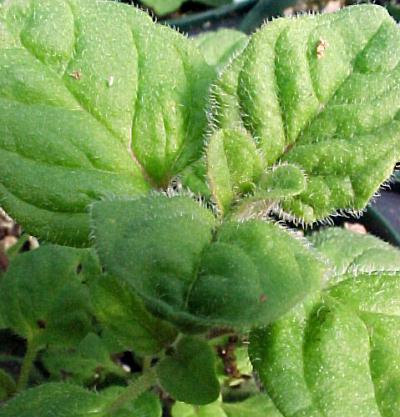 |
Oregano, Santa
Cruz (Origanum vulgare 'Santa Cruz') |
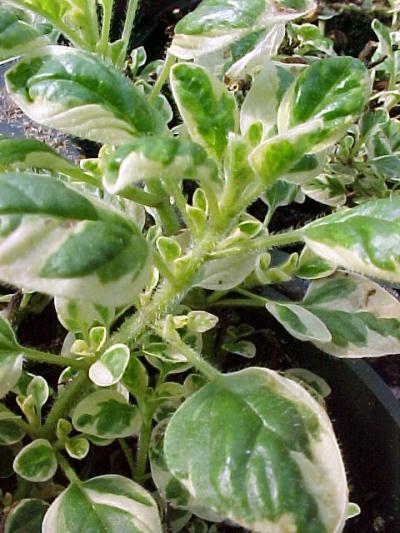 |
Oregano,
Variegated (Origanum vulgare 'Variegata')
Greeks and Romans began
using this herb for it's medicinal purposes. Oregano has
been confused through time, seeing that no one could
really tell what kind they were using for specific
ailments.
- Culinary: Oregano
has a hot, peppery flavor to it. Used in the
spanish field of cooking for that reason.
Italians use it widely in their cooking, for it's
wonderfull addition to sauces, and pasta.
- Medicinal: There
are many beliefs of the medicinal power of this
herb today. It is said to promote menstruation,
help coughs, headaches, and indigestion.
- Ornamental: Nicely
variegated foliage makes this the most ornamental
of all the oreganos. All the fine uses of Oregano
in a highly decorative plant.
- Aromatic:
Oregano is used in some regions as a house plant,
and when walked by or brushed, gives a nice
oregano fragrance.
- Full Sun
- 12 inches in height
- Great with
Spanish/Mexican dishes
- Tender Perennial
- Well-Drained soil.
|
| Image Soon |
Parsley, Curly
(Petroselinum crispum) Parsley is one of the best known and most
widely used herbs. It is actually a biennial, but is
usually cultivated as an annual because the first year
leaves have the best of flavor.
- Culinary: Salads,
soups are great for the addition of the foliage.
The root is also added to soups and stews. A
fresh sprig is eaten for a breath freshener.
- Medicinal:
High in vitamins. Not very popular medicinally.
- Ornamental:Beautiful
curled foliage is used as a garnish on many
plates, but seldom eaten when used for garnish.
Also adds beauty to the garden with its deep
green foliage.
- Full Sun.
- 12-18 inches in
height.
- Weed often to keep it
productive.
- Biennial
- Well-Drained soil
|
| Image Soon |
Parsley, Italian
(Petroselinum crispum 'Nepolitanum') Superior in taste, and size
compared to the curled version, but of less ornamental
value. Stll has the dark green foliage from its high
content of chlorophyll.
- Culinary: Salads,
soups are great for the addition of the foliage.
The root is also added to soups and stews. A
fresh sprig is eaten for a breath freshener.
- Medicinal:
High in vitamins. Not very popular medicinally.
- Ornamental:Beautiful
curled foliage is used as a garnish on many
plates, but seldom eaten when used for garnish.
Also adds beauty to the garden with its deep
green foliage.
- Full Sun.
- 18 inches in height.
- Weed often to keep it
productive.
- Biennial
- Well-Drained soil
|
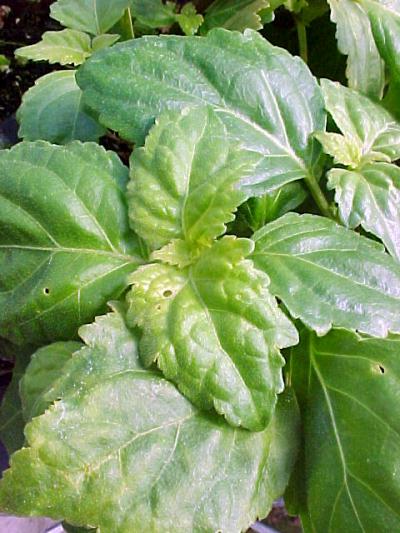 |
Patchouli
(Pogostemon cablin) Widely
known for its aromatic values. One drop will uplift
senses. Used significantly in India, and other Asian
countries. Originally from tropical climates, such as
S.E. Asia.
- Medicinal:
The most important part of this plant is the
young foliage, in which the oil is derived. Used
as an antiseptic, antidepressant, and even a
sedative. Smaller quantities can uplift one's
spirits, and too much, may sedate you. Also used
as a remedy for venemous snake and insect bites.
- Aromatic: Used
in aromatherapy to cure many ailments.Foliage is
used in potpourris, and the oil is used in
perfumes.
- Full Sun
- 24-30 inches in
height.
- Loves the sun + heat.
Protect from cold.
- Perennial
- Well-Drained Soil
|
| Image Soon |
Pennyroyal,
Creeping (Mentha pulegium) There are two types of Pennyroyal-
American and European. European being the one that is
creeping. American is a more of an upright grower, widely
used by American indians. Paying attention to
Pennyroyal's botanical name, Pulegium, in latin,
Pulex means 'flea'.
- Medicinal: Tea
is a product of this herb to help soothe painful
stomachs. Oil from Pennyroyal has been used to
promote abortion. Oil is considered toxic.
Pennyroyal oil is also used in many types of
insect repellant, and if you crush the leaf and
rub into skin, they will stay away.
- Aromatic:
The foliage smells of peppermint, and the plant
is actually related to the mint family.
- Full Sun to part
shade.
- 4-16 inches in
height.
- Urged not to use as a
home remedy.
- Perennial
- Rich, moist soil.
|
| Image Soon |
Perilla
(Perilla frutescens) Attractive red-purple foliage wins this herb
a spot in many gardens. Used frequently, and native to
the oriental region, Perilla is highly cultivated for its
culinary and medicinal values.
- Culinary: Japanese
use it in sushi to reduce the chance of bacteria
poisoning. Foliage and chutes are a big
ingredient in stir fries, and deep fries. The
seeds are used as flavoring for pickles
- Medicinal:
Used as a remedy for coughs, colds, morning
sickness, and indigestion. Also used as antidote
to poisonous bites.
- Aromatic: The
foliage is added to potpourris. it has a slight
cinnamon scent.
- Ornamental: Red-Purple
foliage and pink flowers bring the ornamental
values of this plant to the eye.
|
![]()